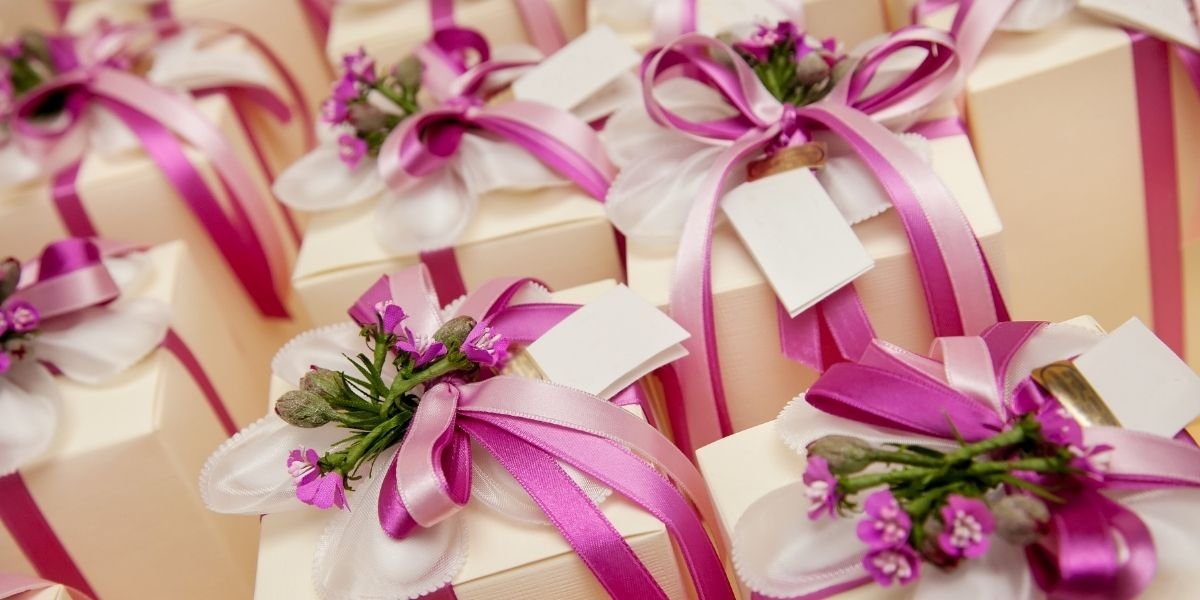On the wedding day, the groom would give a 'coppa amatoria' to his beloved, a ceramic plate with sugared almonds as a sign of fertility. The materials - used to make these plates - were painted ivory, mother-of-pearl, gold, and enamel.
The official introduction of the wedding favour in Italy dates back to 1896. On the occasion of the wedding of Vittorio Emanuele, Prince of Naples and future King of Italy, and Elena of Montenegro, all the guests brought favours.
Since then, this particular gift became the symbol of the bride and groom, and the tradition of the modern wedding favour was born. So, whether the wedding favour is made of porcelain, glass or some other material, its significance is linked to the sugared almonds, a symbol of good luck for the event being celebrated or celebrated.
When organising a wedding, a fundamental aspect is the choice of favours, which must reflect the theme of the party and be the same for all guests. Sugared almonds must accompany it, the number of which takes on different meanings. For example: for a wedding, one sugared almond symbolises the event's uniqueness, the indissolubility of the marriage bond due to deep and eternal love. Three sugared almonds represent the will of a third party, i.e. a child. Finally, five sugared almonds signify happiness, fertility, longevity, health and wealth.

The wedding favour today: a special wish for happiness

Over time, the modern wedding favour has continued to be part of the custom, with a few differences.
Firstly, this gift is no longer reserved for members of the aristocracy alone but has spread throughout society. Secondly, the wedding favour today is given by the bride and groom to their guests. A sign of thanks for their presence and gifts.
Over time, the use of wedding favours has extended to other anniversaries such as significant wedding anniversaries and other ceremonies such as graduation, graduation or even birthdays and wedding vows.
Nowadays, there is a tendency to give useful wedding favours that reflect the emotion of the celebrations and can also be used in the daily life of the recipient.
The choice falls, in fact, on porcelain honey dishes, wooden cutting boards. There are also glass perfumers, towel sets, baking trays, pictures, frames and even olive trees or wine bottles.
The colour of the sugared almonds also changes depending on the type of ceremony. For baptisms, the confectionery is usually single-coloured, including pink or blue sugared almonds, while for weddings, communions and confirmations, white is used.
For graduation celebrations, the colour red is used, while the colour associated with the promise of marriage is green.
The promise of marriage is a very important event, especially for more traditional families. The tradition of giving wedding favours at this event still takes on the meaning of thanking friends and relatives. That is, the people closest to the bride and groom who support the couple.
Also on the occasion of graduation, the doctor or lady doctor gives out wedding favours. The colour generally used is red: they are small lucky owls, parchments, plexiglass cases, square caps and other objects. This is a heartfelt wish from parents who hope to see all their children's expectations fulfilled.
Finally, communion and confirmation favours remind everyone of the children's full adherence to the Catholic religion. Generally, objects depicting sacred images are given. For example, the Holy Family, the Rosary, decorated crosses. But also glass balls, wooden trees of life and many others.
The favours also contain a printed card with the details of the ceremony, i.e. the name(s) of the person(s) being honoured, the date of the ceremony and any other details required.
The card is also chosen according to the type of ceremony. For example, children's cards may have children's designs on the front, first communion cards have a chalice with a host, confirmation cards have a gospel design, and wedding cards have a married couple or wedding rings.
International Trade Fair for Favours: Vebo Fiera

The International Trade Fair for Favours, Gifts and the Home is a real meeting place for professionals in the sector: exhibitors, manufacturers, retailers and distributors.
This is the first international event created specifically to serve the various distribution and purchasing channels. With its all-Italian design, it is the reference event in Italy and one of the main trade fairs in Europe dedicated to favours, gifts and the home.
During the event you can discover new trends, new materials, colours, fragrances, shapes and the evolution of consumption.
You have the opportunity to talk to experts in the field and evaluate new ideas and strategies to find new stimuli suitable for your customers.
Vebo Fiera is 20 years old and this year it will be held at the Mostra d'Oltremare in Naples from 1 to 4 October. You can visit it: Friday 1, Saturday 2 and Sunday 3 October, from 9.00 to 19.00 and Monday 4 October from 9.00 to 15.00.
Access to the fair is free of charge and reserved exclusively for trade operators with a VAT number. In order to gain access to the exhibition, it is necessary to request an entry voucher online at www.vebofiera.com in the "Visitors" section.
PLAN YOUR VISITAbout the author
Written on 03/09/2021



Marialuisa Monfreda
The use of wedding favours in Italy dates back to the 15th century with the custom of exchanging boxes of sugared almonds and gifts between the families of the future spouses during the engagement party.